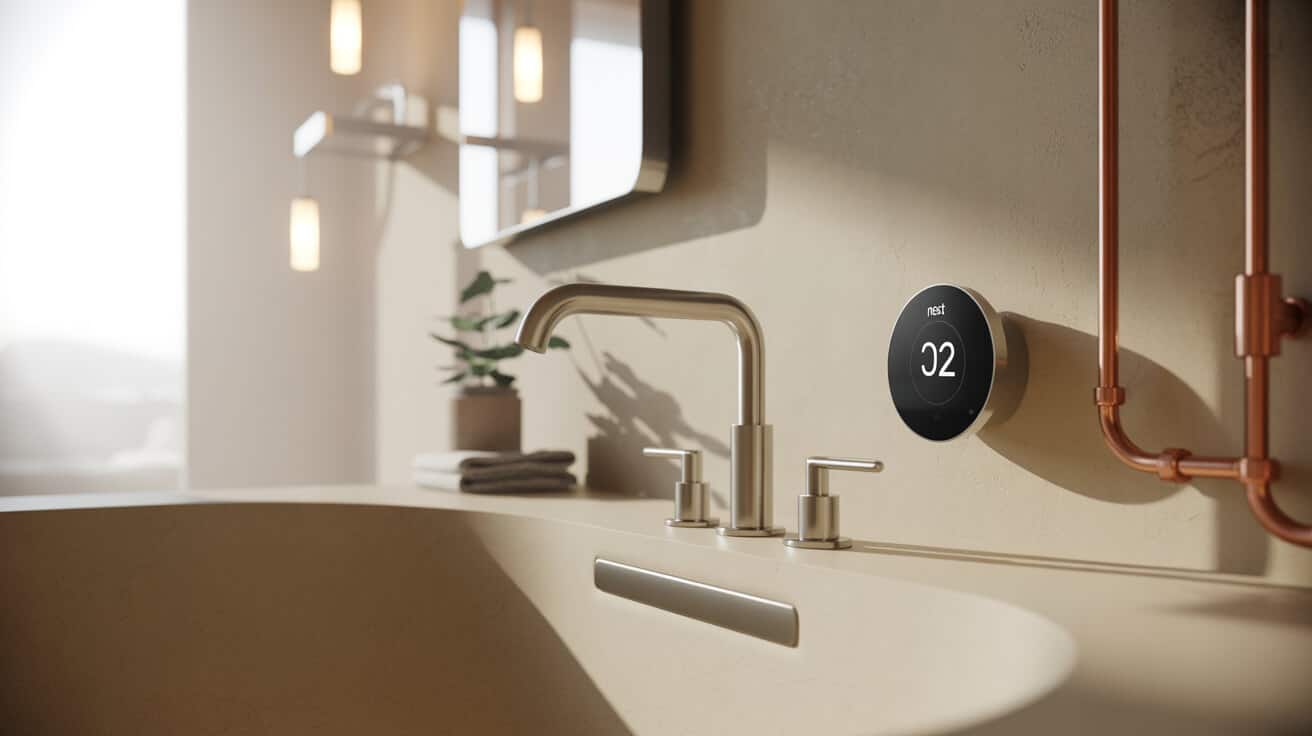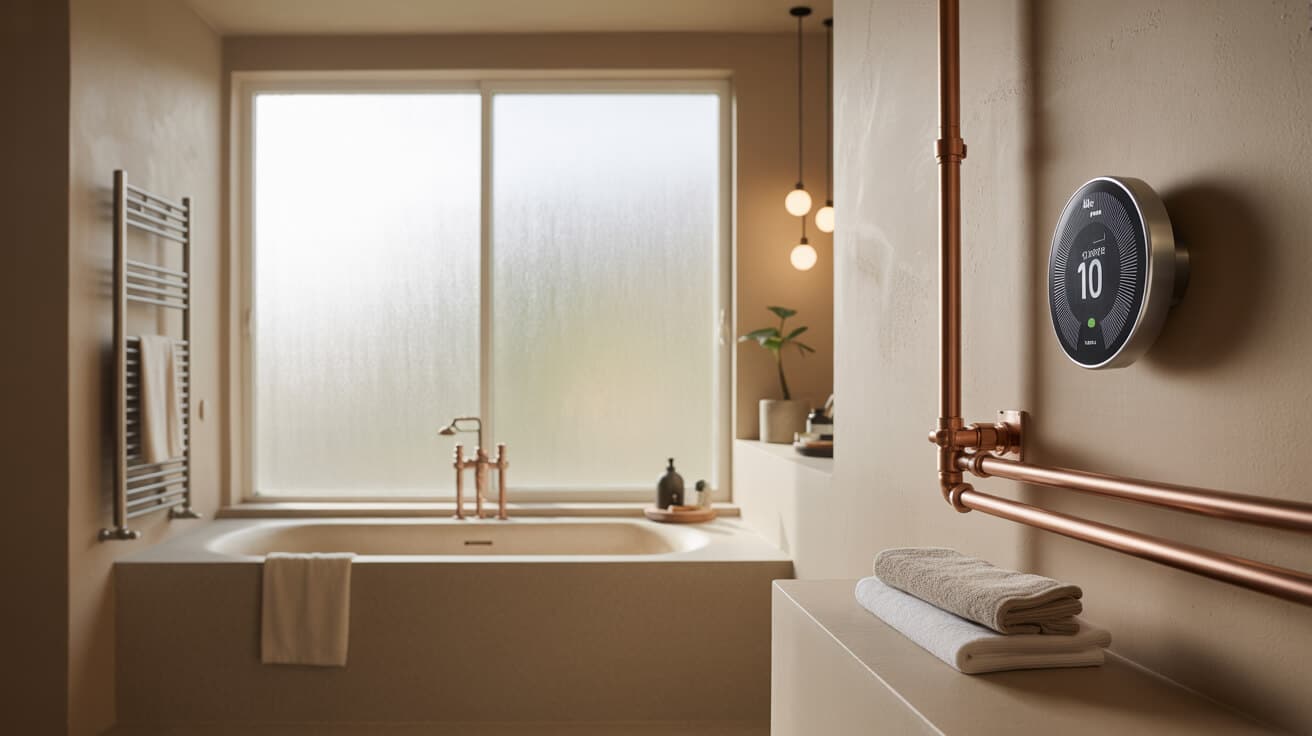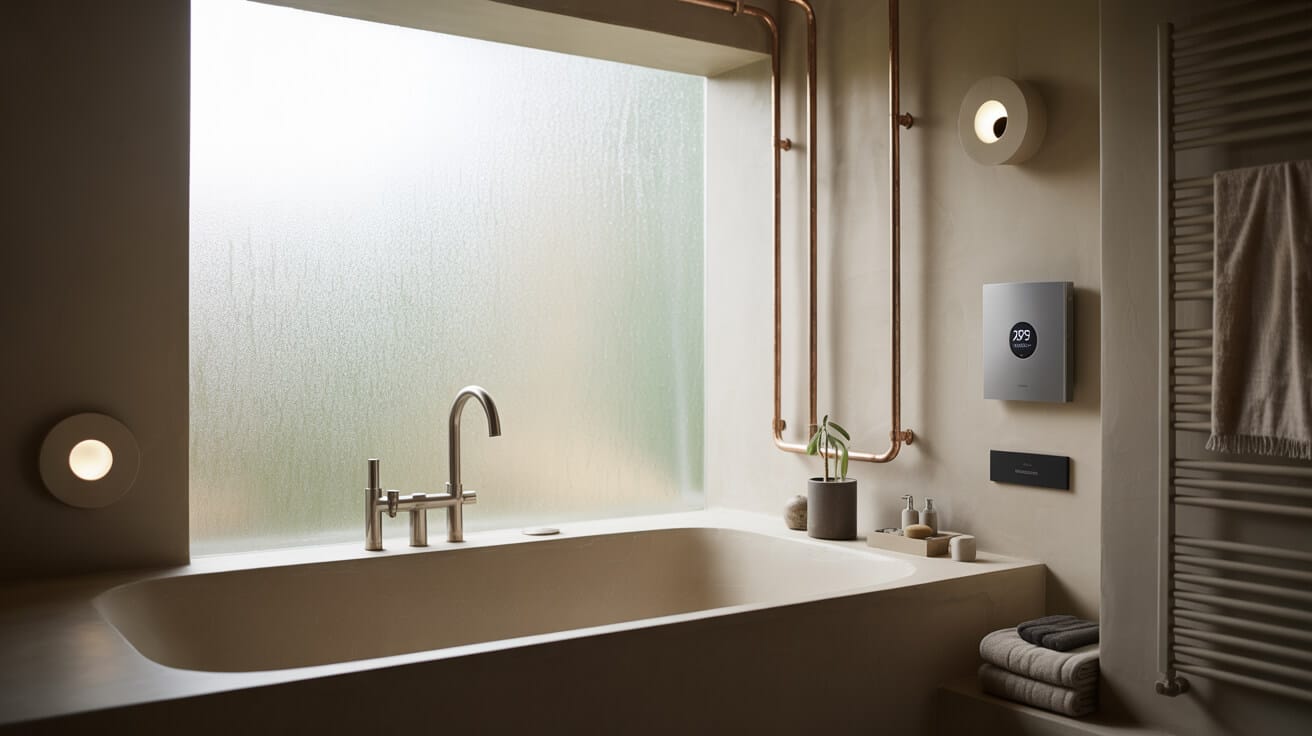The device occupies a pivotal role within the United Kingdom’s transition to adaptive energy controls, aligning digital intelligence with established plumbing and heating systems. Central to its value is its learning algorithm, capable of recognising routines, minimising fuel consumption, and supporting a broad matrix of modern condensing boilers, zoning arrangements, and hot water configurations. The Nest 3rd Gen’s interface, cloud connectivity, and OpenTherm modulation enable personalised scheduling for single-family owners, compliance automation for landlords and managing agents, and robust portfolio performance analytics for facility managers and property developers.
Etymology or Name Origin
The “Nest” name reflects a brand philosophy centred on domestic comfort, intelligent environmental adaptation, and security, underpinning the device’s learning-centric approach to climate control. The “3rd Gen” moniker specifies the product’s iteration, signifying expanded features, compatibility, and user interface enhancements relative to prior releases. “Learning Thermostat” identifies the core attribute—the system’s ability to anticipate behavioural patterns and adapt outputs for sustained comfort and efficiency.
Overview and Contextual Framing
Learning thermostats conceptualise a migration from manual or timer-driven heating management toward algorithmic, user-responsive environment control. Within the United Kingdom’s evolving energy context, these devices fulfil a dual function: they drive energy efficiency in private homes and yield compliance outcomes for portfolio landlords subject to minimum efficiency standards. They integrate with conventional radiators, underfloor heating, and mixed-solution legacy systems, providing a bridge between tradition and digital oversight. Adoption pathways frequently reflect structural incentives: homeowners pursue comfort and cost savings, landlords target regulatory compliance, and commercial entities seek consolidated asset control.
History
Origins and Early Programmable Devices
Thermostatic controls originated as electromechanical dials, progressing to programmable digital units allowing timed setback periods. The advance to wireless and remote-managed systems saw a gradual reduction in human oversight, setting the stage for behavioural learning and environment-aware technologies.
Development in the European and UK Market
Early digital thermostats were primarily timer-based, relying on occupant manual input. Requirements for more granular control and government efficiency standards (such as ErP and Boiler Plus) stimulated investment in self-optimising, cloud-connected controls, shaping today’s regulatory context.
Recent Advances in Learning Algorithms
Adaptive scheduling and occupancy recognition emerged as key differentiators, with devices learning from daily routines (wake times, absences, seasonal shifts) to automate comfort. Integration of app-driven control and machine learning informed the evolution of property-wide climate management and multi-zone control.
Major Updates in the Third Generation Model
The 3rd Gen release offered a larger display, increased resolution, improved proximity detection, and enhanced support for OpenTherm (modulating) and relay-based (on/off) boiler architectures. New hardware delivered dual-channel support for hot water and heating, supporting a wider range of UK property types. Enhanced Wi-Fi modules, expanded app compatibility, and refined energy reporting positioned the device at the intersection of end-user convenience and property compliance.

Concept and Description
Physical Characteristics
The device presents as a slim, wall-mounted disc with an intuitive dial-ring and colour LCD, housing sensor arrays for temperature, humidity, occupancy, and ambient light. Its modular base supports both wall and desktop mounting, linked to the Heat Link relay module via secure RF channels.
Main Components
Key components include:
- Thermostat unit: User-facing interface for display and manual control.
- Heat Link: Relay module facilitating power, data, and switching between thermostat, boiler, and zoning valves.
- Sensors: Temperature, motion, and light enabling adaptive automation.
- Wi-Fi chipset: Network connectivity for cloud-based scheduling, data storage, and firmware updates.
Connectivity and Protocols
The system integrates with home Wi-Fi networks, offering remote access via the Google Home and Nest apps. Communication protocols include:
- OpenTherm: Enables real-time modulation of supported boilers, fine-tuning output for load matching.
- Relay/Switchlive Control: Direct electrical switching for compatibility with legacy systems.
- RF Pairing: Ensures secure, proprietary communication between thermostat and Heat Link, independent of Wi-Fi reliability.
User Interface and Mobile Control
A combination of the physical interface and mobile application allows management of schedule, temperature, and system status. Display feedback employs a colour-coded system, with learning indicators and occupancy status reinforcing user trust in automated outcomes. Remote app access extends complete system manipulation and reporting to your smartphone or desktop.
Functionality, Purpose, and Applications
Scheduling and Automation
Leveraging learning algorithms, the system observes your daily routines—adjusting heating patterns and hot water cycles for efficiency and comfort. The controller dynamically refines setpoints, reduces waste, and adapts to exceptions (holidays, seasonal changes, guest stays).
Hot Water and Heating Zone Control
In standard single-zone installations, the thermostat activates central heating and, where configured, hot water tanks. Multi-zone configurations are achieved through multiple Heat Links and thermostats, offering independent regulation for distinct areas—powerful in larger homes, HMOs, or mixed-use buildings.
App-Based Remote Access and Data
Remote management via mobile app enables live schedule modification, boost activation, maintenance reminders, and access to system reports. For landlords and facility managers, multi-site dashboards permit fleetwide scheduling and compliance data extraction, streamlining property oversight.
Integration with Smart Home Platforms
Interfacing with Google Assistant and other major platforms extends voice-activated and scenario-driven triggers, increasing accessibility. These integrations fold climate management into broader digital building or lifestyle automations.
Typical Applications
- Individual properties: Owners benefit from learning-driven comfort, energy reduction, and remote fault reporting.
- Rental portfolios: Landlords access compliance documentation, asset-level scheduling, and energy metrics for MEES and EPC requirements.
- Commercial premises: Facility managers streamline control of diverse environments, integrate remote analytics, and expose building performance metrics to stakeholders.
Technical Classifications and Compatible Systems
Supported Boiler Types
Compatibility is assured with the majority of UK boilers. Table 1 categorises supported configurations:
| Boiler Type | Example Brands | Supported Protocols |
|---|---|---|
| Combi (instant) | Worcester, Vaillant | OpenTherm, Relay |
| System | Ideal, Baxi | OpenTherm, Relay |
| Heat-only | Viessmann, Potterton | Relay |
| Hybrid/Mixed | Multiple | OpenTherm (adapters may be required) |
OpenTherm and Industry Protocols
OpenTherm modulation enables proportional output, reducing overshoot and boiler cycling for efficiency and comfort. Where OpenTherm is unavailable, relay switching is used, providing reliable compatibility at the cost of binary control.
Mixed-Heating and Multi-Zone Systems
Properties with underfloor heating, multiple loops, or radiator circuits use parallel Heat Links and zoning relays, ensuring nuanced climate control and efficient energy use. Mechanical adaptation kits may be necessary for legacy system support.
Third-Party Device Integration
The device’s relay outputs and protocol support allow connection to a range of third-party actuators, valves, and sensors, simplifying integration into broader refurbishment projects or smart system upgrades executed by Plumbers 4U.
Installation and Commissioning
Installation Procedure
Professional survey and compatibility check establish prerequisites for installation. Installers follow a staged protocol—power isolation, mounting, secure wire terminations, and integrated system test—to guarantee both functionality and compliance.
Wiring and Heat Link Integration
The Heat Link is typically installed near the boiler, connected to mains and heating/hot water circuits. OpenTherm users connect data terminals where supported, while traditional relay installations employ load-checked switchlive controls. Electrical certification (Part P) and gas safety protocols (for live connections) are strictly observed by certified engineers.
Commissioning, Testing, and Compliance
System commissioning includes:
- Device pairing with cloud/account registration
- End-to-end heating/hot water functionality test
- App activation and user log-in setup
- Documentation of all test results in the Benchmark logbook (UK best practice)
- Recording of appliance model and firmware version for warranty
User Handover and Documentation
Plumbers 4U delivers personalised handover, orienting your household or organisation to the full capabilities, including how to use manual overrides, adapt schedules, and understand energy reports. A maintenance/support contact is provided, ensuring ongoing system performance.

Stakeholders and Roles
Engineers and Installers
Certified plumbing and heating engineers (Gas Safe/WRAS/Competent Person) handle the installation, ensuring regulatory adherence and operational safety. Their role includes consulting on compatibility, system upgrades, and post-instal support.
Property Owners and Tenants
Owners and residents enjoy the flexibility of app-based management, live scheduling, and energy report visibility. For tenants, well-documented instructions and maintenance protocols are crucial to avoid disruption and ensure compliance with rental regulations.
Facilities and Portfolio Managers
Large-scale asset owners centralise heating management, compliance, and energy performance improvements with multi-site deployment and remote administration features.
Regulatory Bodies
Entities such as the Gas Safe Register enforce installation standards, while government agencies monitor compliance with energy and safety directives. Product safety certification and benchmarking are required for warranty and best practice adherence.
Legal, Regulatory, and Ethical Considerations
Regulatory Standards for Energy Control
Installations must comply with Boiler Plus and the ErP Directive, ensuring approved controls and minimum efficiency standards are met. Certification of installation and subsequent performance is logged for inspection.
Data Privacy and Network Security
All user and system data is encrypted and stored in accordance with current data protection regulations. Plumbers 4U adheres to robust privacy protocols, ensuring that remote access and reporting do not compromise your privacy or system integrity.
Certification and Warranties
Devices are covered under manufacturer warranty, contingent on professional installation and complete documentation in the Benchmark logbook. Warranty support is accessible through Plumbers 4U’s service network for ongoing reliability.
Performance Metrics and Operational Evaluation
ErP and EPC Metrics
The device’s ErP class is displayed at installation, ensuring that all new and modified heating systems meet legislative requirements. Efficiency gains reported in the EPC assessment reflect tangible reductions in property energy usage.
User Feedback & Comparative Data
Customers routinely report improved system responsiveness, reduced fuel bills, and high satisfaction with adaptive learning and app capabilities. Table 2 summarises key performance outcomes compared to standard programmable controls.
| Feature | Standard Programmable | Nest 3rd Gen |
|---|---|---|
| Learning schedule | Manual only | Adaptive |
| Remote access | Rare | Ubiquitous |
| Multi-zone capability | Complex upgrades | Native, modular |
| Energy reports | Absent | Integrated |
| OpenTherm modulation | Rare | Supported |
Energy and System Reporting
Automated reports present clear breakdowns of usage patterns, anomaly alerts, and efficiency trends, supporting your compliance and continuous improvement strategy.
Challenges, Barriers, and Limitations
Technical Integration Issues
Not all legacy wiring schemes or heating configurations support direct plug-and-play installation. Some properties may require rewiring or optional adapters, extending installation time and cost.
User Adaptation and Training
Transitioning users from manual or simple programmable controls to adaptive scheduling may introduce temporary friction, mitigated by guided onboarding and in-person tutorials.
Reliability and Maintenance
Wi-Fi outages, outdated firmware, or physical tampering can temporarily disrupt remote features or cloud reporting. Device remains operational with onsite controls and basic scheduling.
Impact, Influence, and Legacy
Energy Efficiency and Policy
Deployment of the device, especially at scale, contributes directly to national energy conservation targets, supporting MEES and EPC uplift for rental portfolios and new constructions alike.
Modernization and Cultural Influence
Results in transformed expectations around heating management; both comfort and cost-control become approachable for your property portfolio, with evidence-based reporting reinforcing best practice and modernization ROI.
Long-Term Value
Properties equipped with verified smart controls often experience increased tenant retention and asset value due to compliance, transparency, and the demonstrable reduction in operating costs.
Future Directions, Cultural Relevance, and Design Discourse
Advancements in environmental sensing, open-standard control protocols, and service integration will underpin the future of programmable comfort, enabling ever-finer adaptation to user habits and property profiles. Further regulatory elevation of energy reporting documentation and asset compliance standards will increase demand for certified, remotely managed climate control, deeply integrating Plumbers 4U’s services into your property’s ongoing efficiency and compliance narrative. As automated controls become a baseline expectation for new lets, sales, and EPC benchmarks, the social meaning of comfort, technology, and property value will continue to evolve, guided by the continuous adaptation of systems like the Nest Learning Thermostat 3rd Gen.

